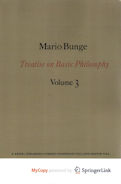Preface
This volume continues and concludes the task begun in Part I,
titled The Furniture of the World –
namely the building of an exact and systematic ontology consistent with contemporary science.
However, it can be read independently by anyone willing to take for granted
the basic notions analyzed and systematized in the companion volume,
namely those of substance, property, thing, possibility, change, space, and time.
The three main themes of this book are wholeness (or systemicity), variety, and change.
These three notions are analyzed and systematized,
and they occur in some of the main assumptions of our ontology.
One of these hypotheses is that the universe is not a heap of things
but a thing composed of interconnected things – i.e. a system.
This supersystem 1s composed of subsystems of various kinds: physical, biological, social, etc.
Only physical systems may be composed of things that are not themselves systems,
such as elementary particles and field quanta.
However, even nonsystems are components of some system or other,
and every system but the universe is a subsystem of some system: there are no strays.
Ours is, in sum, a world of interconnected systems. Moreover it is the only one.
Another postulate of this system of ontology is that
concrete systems are not all alike except insofar as they are systems
and therefore tractable with the help of a unifying systems-theoretic framework.
There are different kinds of system and each is characterized by its own peculiar properties and laws.
Surely we sometimes succeed in accounting for the emergence and the history of a system
in terms of its composition, environment, and structure.
Nevertheless, explaining need not be explaining away:
explained systems are not heaps, explained emergence is no mere resultant,
and explained novelty is not old.
Systemicity, emergence, and qualitative novelty and variety are as genuine
as they are capable of being explained.
Far from being incompatible with reason, wholeness and emergence can be understood.
A third major thesis of this work is that no system, except for the world as a whole, lasts forever.
Systems get assembled, change, and break down.
If natural, systems emerge as a result of self-assembly processes –
often from debris of former systems.
Even modest accretion processes can ensue in systems possessing emergent properties.
Order can thus emerge from randomness, systems from physical precursors,
living systems from nonliving ones, and so on.
(Entropy need not increase in open systems.)
All three theses are by now common knowledge or nearly so.
Now they – jointly with many others – have become part and parcel
of a science-oriented ontological system couched in a fairly exact language.
Thus the novelty of this system resides sometimes in its components,
and at other times in their organization.
…



